#Microservices
Explore tagged Tumblr posts
Text
Ready to future-proof your applications and boost performance? Discover how PHP microservices can transform your development workflow! 💡
In this powerful guide, you'll learn: ✅ What PHP Microservices Architecture really means ✅ How to break a monolithic app into modular services ✅ Best tools for containerization like Docker & Kubernetes ✅ API Gateway strategies and service discovery techniques ✅ Tips on error handling, security, and performance optimization
With real-world examples and practical steps, this guide is perfect for developers and teams aiming for faster deployment, independent scaling, and simplified maintenance.
🎯 Whether you’re a solo developer or scaling a product, understanding microservices is the key to next-level architecture.
🌐 Brought to you by Orbitwebtech, Best Web Development Company in the USA, helping businesses build powerful and scalable web solutions.
📖 Start reading now and give your PHP projects a cutting-edge upgrade!
2 notes
·
View notes
Text
Microservices vs Monolith: Choosing the Right Architecture

Content: When developing software systems, architecture is one of the first and most impactful decisions. Two primary models dominate: monolithic applications and microservices architectures.
Monoliths consolidate all functions into a single unit, making them easier to build initially. However, they often become cumbersome as the codebase grows, making deployments riskier and updates slower.
Microservices, on the other hand, break applications into independent services that communicate over APIs. Each service is loosely coupled, allowing teams to work independently, use different tech stacks, and scale specific components without overhauling the entire system.
However, microservices come with their own challenges: higher complexity, the need for service orchestration, and potential for network latency.
Choosing between monolith and microservices depends largely on your team's size, project complexity, and long-term goals. Companies uses tools like Software Development assist in evaluating your needs to design the most appropriate architecture, balancing scalability with simplicity.
Ultimately, it’s not about trends—it’s about choosing what fits your project’s current and future states.
Before jumping into microservices, ensure your team masters clean modular design within a monolith first—it’ll make the transition smoother if/when you need it.
3 notes
·
View notes
Text
so it turns out they weren't kidding when they said breaking a monolith into microservices is hard.
#programming#enterprise software#enterprise application development#microservices#it also doesn't help that some folks need to BANNED from writing SQL queries
3 notes
·
View notes
Text
microservice architecture is just one giant Rube Goldberg machine throwing JSON at each other

5 notes
·
View notes
Text
youtube
The Best DevOps Development Team in India | Boost Your Business with Connect Infosoft
Please Like, Share, Subscribe, and Comment to us.
Our experts are pros at making DevOps work seamlessly for businesses big and small. From making things run smoother to saving time with automation, we've got the skills you need. Ready to level up your business?
#connectinfosofttechnologies#connectinfosoft#DevOps#DevOpsDevelopment#DevOpsService#DevOpsTeam#DevOpsSolutions#DevOpsCompany#DevOpsDeveloper#CloudComputing#CloudService#AgileDevOps#ContinuousIntegration#ContinuousDelivery#InfrastructureAsCode#Automation#Containerization#Microservices#CICD#DevSecOps#CloudNative#Kubernetes#Docker#AWS#Azure#GoogleCloud#Serverless#ITOps#TechOps#SoftwareDevelopment
2 notes
·
View notes
Text
Development Architectures: Monolith vs. Microservice
Unveiling the two titans of development architecture: the monolithic giant and the microservices army. Discover their strengths, weaknesses, and which reigns supreme for your next project. In this episode of Development Architectures: Monolith vs. Microservice.
2 notes
·
View notes
Text
Optimizing Performance on Enterprise Linux Systems: Tips and Tricks
Introduction: In the dynamic world of enterprise computing, the performance of Linux systems plays a crucial role in ensuring efficiency, scalability, and reliability. Whether you're managing a data center, cloud infrastructure, or edge computing environment, optimizing performance is a continuous pursuit. In this article, we'll delve into various tips and tricks to enhance the performance of enterprise Linux systems, covering everything from kernel tuning to application-level optimizations.
Kernel Tuning:
Adjusting kernel parameters: Fine-tuning parameters such as TCP/IP stack settings, file system parameters, and memory management can significantly impact performance. Tools like sysctl provide a convenient interface to modify these parameters.
Utilizing kernel patches: Keeping abreast of the latest kernel patches and updates can address performance bottlenecks and security vulnerabilities. Techniques like kernel live patching ensure minimal downtime during patch application.
File System Optimization:
Choosing the right file system: Depending on the workload characteristics, selecting an appropriate file system like ext4, XFS, or Btrfs can optimize I/O performance, scalability, and data integrity.
File system tuning: Tweaking parameters such as block size, journaling options, and inode settings can improve file system performance for specific use cases.
Disk and Storage Optimization:
Utilizing solid-state drives (SSDs): SSDs offer significantly faster read/write speeds compared to traditional HDDs, making them ideal for I/O-intensive workloads.
Implementing RAID configurations: RAID arrays improve data redundancy, fault tolerance, and disk I/O performance. Choosing the right RAID level based on performance and redundancy requirements is crucial.
Leveraging storage technologies: Technologies like LVM (Logical Volume Manager) and software-defined storage solutions provide flexibility and performance optimization capabilities.
Memory Management:
Optimizing memory allocation: Adjusting parameters related to memory allocation and usage, such as swappiness and transparent huge pages, can enhance system performance and resource utilization.
Monitoring memory usage: Utilizing tools like sar, vmstat, and top to monitor memory usage trends and identify memory-related bottlenecks.
CPU Optimization:
CPU affinity and scheduling: Assigning specific CPU cores to critical processes or applications can minimize contention and improve performance. Tools like taskset and numactl facilitate CPU affinity configuration.
Utilizing CPU governor profiles: Choosing the appropriate CPU governor profile based on workload characteristics can optimize CPU frequency scaling and power consumption.
Application-Level Optimization:
Performance profiling and benchmarking: Utilizing tools like perf, strace, and sysstat for performance profiling and benchmarking can identify performance bottlenecks and optimize application code.
Compiler optimizations: Leveraging compiler optimization flags and techniques to enhance code performance and efficiency.
Conclusion: Optimizing performance on enterprise Linux systems is a multifaceted endeavor that requires a combination of kernel tuning, file system optimization, storage configuration, memory management, CPU optimization, and application-level optimizations. By implementing the tips and tricks outlined in this article, organizations can maximize the performance, scalability, and reliability of their Linux infrastructure, ultimately delivering better user experiences and driving business success.
For further details click www.qcsdclabs.com
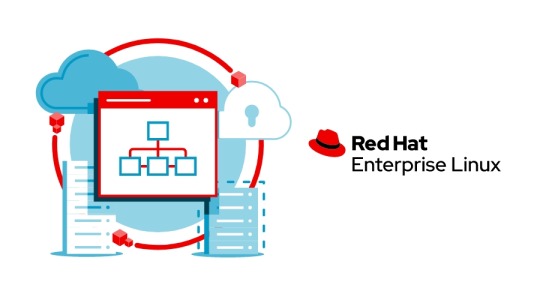
#redhatcourses#redhat#linux#redhatlinux#docker#dockerswarm#linuxsystem#information technology#enterpriselinx#automation#clustering#openshift#cloudcomputing#containerorchestration#microservices#aws
1 note
·
View note
Photo
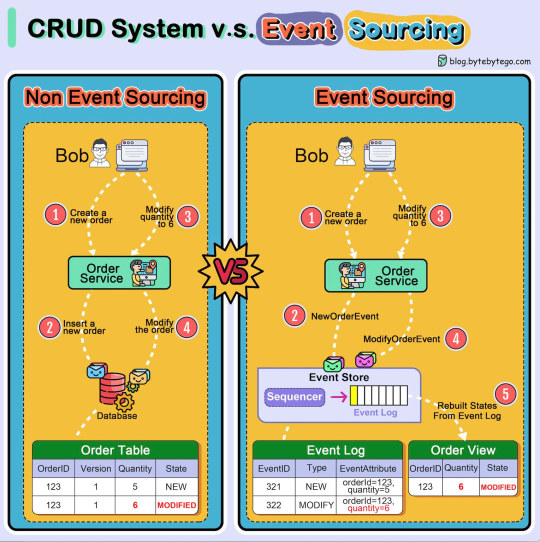
YABI Yet another ByteByteGo Infographic: This one shows the difference between a traditioanl CRUD (create, read, update and delete) system and a more contemporary event sourcing system. Both achieve the same end result but the event sourcing model is more resilient to failure and data corruption. It also scales well in a microservices environment.
Although the diagram does not mention it, the two systems can be used in a complimentary fashion. The CRUD system can be exposed as a typical REST API which is very well understood by developers and quite easy to develop to. Meanwhile, within the organisation the CRUD methods can easily proxy to events. The net result is a modern event sourcing system internally with a low friction REST API for integration.
(via https://substack-post-media.s3.amazonaws.com/public/images/0a124ddf-8104-48fc-8f61-e190a73579e9_1529x1536.jpeg (1529×1536))
2 notes
·
View notes
Text
The Rise of AI-Based Products: Transforming the Way We Live and Work
Misconception about AI product Last week I encountered a most important question, how AI can be incorporate on software products or tools. Every organization is thinking to integrate AI with its products or solutions. There are so many home appliances are being sold in the the name of AI. Buyers are getting attracted towards AI. What it will do that is not the anybody’s concern Artificial…
#AI Tools Digital Inclusion Cloud Computing Machine Learning#Architecture#artificial-intelligence#azure#cloud-computing#GenAI#microservices#security#technology
0 notes
Text
🏢 Streamlining Software Quality: Advanced Integration Testing Strategies for Enterprise Applications 🔍⚙️
Enterprise-grade apps aren’t just code—they’re ecosystems. Databases, microservices, APIs, cloud providers... all talking to each other. And when one of them breaks? Everything’s on fire. 🔥
That’s why integration testing is your superpower in 2025. Let’s break it down.👇
🛠️ Modern Integration Testing Must-Haves:
✅ Risk-based prioritization Test what actually matters—payment flows, auth services, data syncs.
✅ Microservices-aware From service meshes like Istio to distributed Sagas—test how your services talk.
✅ Security-first Validate SSO, RBAC, data masking, API gateways—before it goes live.
✅ Performance under pressure Test for scale. Measure latency. Simulate chaos. Be ready for the real world.
✅ CI/CD Integrated Automate tests with your pipeline. Ship faster, with confidence.
📊 Whether you’re dealing with:
Kafka-based event flows
Multi-cloud deployments
Serverless integrations
Audit compliance
Integration testing is the glue that holds your quality together.
🤖 Want to go next-gen? Keploy helps teams auto-generate integration tests and simulate real-world traffic—because flaky tests and manual mocks belong in the past. 🐰⚡

💬 Reblog if your team has been burned by poor integration testing. 💡 Comment with your favorite strategy or tool!
#enterprise#integrationtesting#softwarequality#microservices#devops#keploy#cloudnative#qaengineer#apitesting#testingstrategy#softwaretesting#tumblrtech#ci/cd#devblog
0 notes
Text
Master Modern Web Development with a .NET Core Course
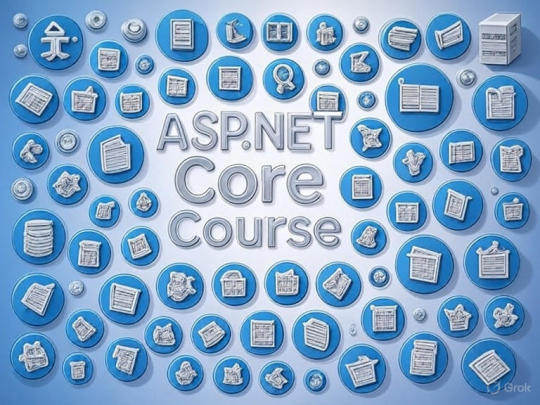
In the current tech ecosystem, the demand for scalable, high-performance, and cross-platform applications is greater than ever. Microsoft’s .NET Core framework—now unified as .NET 7/8 under the ".NET" umbrella—is at the heart of enterprise-grade software development, powering everything from web APIs to microservices, desktop apps, cloud-native solutions, and even AI/ML workloads. Whether you're a beginner or an experienced developer, enrolling in a structured .NET Core course is one of the most efficient ways to break into backend development or level up your full-stack skills.
This comprehensive article will guide you through why .NET Core is still a top framework in 2025, what a quality .NET Core course should teach you, the technical competencies you’ll gain, and how this knowledge can open doors to lucrative development careers.
What is .NET Core?
.NET Core is a cross-platform, open-source development framework from Microsoft, designed to replace the Windows-only .NET Framework. It allows developers to build and run applications across Windows, macOS, and Linux. It’s modern, modular, and extremely fast — perfect for cloud-native, microservices, and serverless architectures.
The framework is now part of the unified .NET 7/8 platform, but developers and courses still commonly refer to it as .NET Core due to its branding history and distinction from the legacy .NET Framework.
Why Take a .NET Core Course in 2025?
If you're aiming to build high-performance APIs, enterprise solutions, or cloud-native apps, a .NET Core course is your gateway to learning:
Modern C# development practices
Microservices and API design
Integration with cloud platforms like Azure
Secure authentication and authorization
Real-time features using SignalR
.NET Core skills are highly sought after, especially by companies in fintech, healthcare, insurance, government, and large-scale enterprise platforms. With the evolving architecture of distributed systems and increasing adoption of DevOps, a solid understanding of .NET Core is more relevant than ever.
What You'll Learn in a .NET Core Course
A high-quality .NET Core course should be hands-on, project-based, and comprehensive enough to cover foundational concepts as well as advanced patterns used in real-world applications.
Here’s a detailed breakdown of topics that an ideal course would cover:
✅ 1. Introduction to .NET Core and Development Tools
What is .NET Core vs .NET Framework?
.NET CLI vs Visual Studio/VS Code
Installing SDKs and runtime environments
Your first console and web app using .NET Core
✅ 2. C# Fundamentals (if beginner-friendly)
Variables, data types, and control structures
Classes, objects, and methods
OOP principles: Encapsulation, Inheritance, Polymorphism
Exception handling
Asynchronous programming with async/await
✅ 3. Web Application Development with ASP.NET Core
MVC Architecture (Model-View-Controller)
Razor Pages and Blazor introduction
Middleware pipeline and routing
Dependency Injection (DI) in ASP.NET Core
✅ 4. RESTful API Development
Creating Web APIs using Controllers and Routing
CRUD operations with Entity Framework Core
Model validation using Data Annotations
API versioning and OpenAPI (Swagger) integration
✅ 5. Entity Framework Core (EF Core)
Code-first vs database-first approaches
Working with Migrations
Writing LINQ queries
Repository and Unit of Work pattern
✅ 6. Authentication and Authorization
ASP.NET Core Identity
Role-based and claims-based authorization
JWT (JSON Web Tokens) for API security
OAuth2 integration (e.g., Google, Facebook login)
✅ 7. Advanced Configuration and Middleware
Custom middleware creation
Logging with Serilog/NLog
AppSettings.json configuration
Secrets and environment variables
✅ 8. Real-Time Features with SignalR
Hub setup and client communication
Building a real-time chat or notification system
Scaling SignalR with Redis or Azure SignalR Service
✅ 9. Testing and Debugging
Unit testing with xUnit/NUnit
Mocking with Moq
Integration and end-to-end testing
Debugging with Visual Studio tools
✅ 10. Deployment and DevOps Basics
Publishing apps to IIS, Azure App Services, or Docker containers
CI/CD pipelines with GitHub Actions or Azure DevOps
Containerization with Docker and Kubernetes (K8s)
Cloud integration with Azure Storage, Functions, or Cosmos DB
Best Platforms for Learning .NET Core in 2025
Here are some highly recommended platforms where you can take a .NET Core course:
🔹 Udemy
Courses like “ASP.NET Core Web API” and “.NET Core Microservices”
Project-based, suitable for beginners and advanced developers
🔹 Microsoft Learn
Modular, interactive tutorials on ASP.NET Core, C#, EF Core, Azure
Great for certifications and role-based learning paths
🔹 Pluralsight
Deep dives into testing, clean architecture, and domain-driven design
Advanced topics like SignalR, gRPC, and performance tuning
🔹 Coursera / edX
Academic-style learning with quizzes and peer-reviewed projects
Includes certifications from top institutions
🔹 YouTube Channels
IAmTimCorey, Nick Chapsas, and Raw Coding offer full tutorials and architecture patterns
Sample Projects You’ll Build in a .NET Core Course
A project-oriented .NET Core course will typically have you build:
🛠 1. Book Management System
CRUD app with EF Core
Role-based login and admin panel
🛠 2. E-Commerce Backend
REST API for products, cart, checkout
JWT authentication and order processing
🛠 3. Microservices App
Multiple services with gRPC or RabbitMQ
API Gateway and service discovery
🛠 4. Real-Time Task Tracker
Using SignalR for live updates
Angular/React frontend integration
🛠 5. Blog CMS with Admin Panel
Rich text editor, comment system
Deployment to Azure Web App
Career Opportunities After a .NET Core Course
Mastering .NET Core opens the door to a variety of lucrative job roles:
Job Title
Average Salary (Global)
.NET Core Developer
$75,000 – $120,000
Full-Stack .NET Developer
$80,000 – $130,000
Backend Engineer (.NET Core)
$85,000 – $140,000
Cloud Developer (.NET + Azure)
$95,000 – $150,000
Microservices Architect (.NET)
$110,000 – $170,000
.NET Core vs Other Frameworks
Feature
.NET Core
Node.js
Django
Spring Boot
Performance
🔥 Very High
High
Moderate
High
Language
C#
JavaScript
Python
Java
Cross-platform
✅ Yes
✅ Yes
✅ Yes
✅ Yes
Tooling (IDE)
✅ Excellent
Good
Average
Good
Enterprise Adoption
✅ Widely used
High
Moderate
High
.NET Core shines in performance, enterprise integration, and long-term support from Microsoft.
Learning Paths After Completing a .NET Core Course
Once you’re done with a .NET Core course, you can specialize further with:
Clean Architecture + CQRS + MediatR
Advanced Blazor (WebAssembly + Hybrid)
Domain-Driven Design (DDD) in .NET
Building Microservices with Dapr and gRPC
Serverless apps using Azure Functions
Integration with React/Angular + Web API
These will prepare you for senior roles or specialized engineering positions.
Final Thoughts
Taking a .NET Core course in 2025 is not just about learning another framework—it's about mastering a modern, versatile, and enterprise-backed technology that’s engineered for performance, scalability, and long-term viability. Whether you’re building small-scale APIs or architecting enterprise-grade microservices, .NET Core gives you the tooling, structure, and performance to get the job done right.
So whether you’re a student, a career-switcher, or an experienced developer, now is the perfect time to dive into a .NET Core course and start building modern, production-grade applications from the ground up.
1 note
·
View note
Text
What is FaaS?

FaaS lets developers run small, event-driven functions without managing servers. It’s a core part of serverless computing, helping businesses build scalable apps with reduced costs and zero infrastructure headaches. Popular options include AWS Lambda and Google Cloud Functions.
0 notes
Text
Still Running Legacy Software in 2025? These 6 Cloud-Native Strategies Will Change Everything
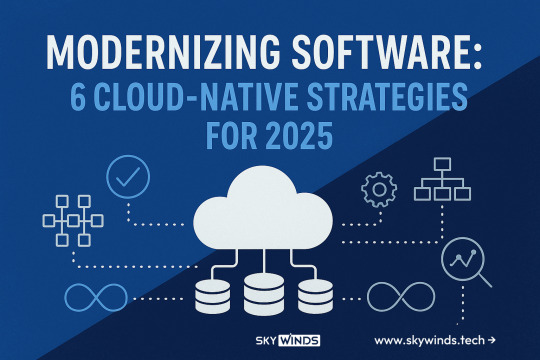
Legacy tech doesn’t just slow you down—it costs you real money, blocks innovation, and frustrates your dev team.
If you’re thinking about modernization, don’t just migrate—rethink everything with cloud-native principles.
In our latest blog at Skywinds, we break down 6 practical strategies to cut costs and boost agility in 2025:
✅ Audit the true cost of your legacy stack ✅ Use microservices (not just rewrites) ✅ Automate releases with CI/CD ✅ Go serverless and use scalable cloud-native databases ✅ Bake in full observability ✅ Build a smart, phased roadmap
These aren’t just buzzwords—they’re what high-performing teams are actually using right now.
Read the full breakdown here → https://medium.com/@skywinds.tech/modernizing-software-in-2025-6-cloud-native-strategies-that-cut-costs-and-boost-agility-
#cloudnative#softwaremodernization#devops#techstrategy#microservices#serverless#programming#skywinds
0 notes
Text
Build a Scalable Video Streaming App Like Netflix
Learn how to build a Netflix-like video streaming app with essential features, tech stack, monetization models, and tips to launch your MVP successfully.
0 notes
Text
The Growing Role of DevOps in Cloud-Native Development
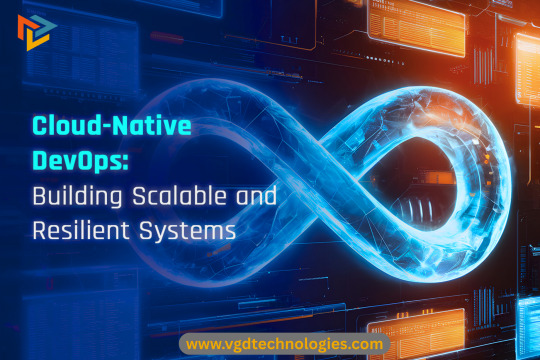
In today’s fast-paced digital ecosystem, businesses are rapidly shifting towards cloud-native architectures to enhance scalability, resilience, and agility. At the heart of this transformation lies a game-changer: DevOps. At VGD Technologies, we believe that integrating DevOps into cloud-native development is not just a trend—it's a competitive necessity.
What is Cloud-Native Development?
Cloud-native is more than just a buzzword. It's an approach to building and running applications that fully exploit the benefits of the cloud computing model. It focuses on:
Microservices architecture
Containerization (like Docker & Kubernetes)
Scalability and resilience
Automated CI/CD pipelines
But without DevOps, cloud-native is incomplete.
DevOps + Cloud-Native = Continuous Innovation//Game-Changing Synergy
DevOps, the synergy of development and operations, plays a pivotal role in automating workflows, fostering collaboration, and reducing time-to-market. When paired with cloud-native practices—like microservices, containers, and serverless computing—it becomes the engine of continuous delivery and innovation. The integration of DevOps practices in cloud-native environments empowers teams to:
Automate deployments and reduce manual errors
Speed up release cycles using CI/CD pipelines
Ensure reliability and uptime through monitoring and feedback loops
Enable seamless collaboration between development and operations
Together, they create a self-sustaining ecosystem that accelerates innovation and minimizes downtime.
Why It Matters More Than Ever
With the rise of platforms like Kubernetes, Docker, and multi-cloud strategies, enterprises are prioritizing infrastructure as code (IaC), automated CI/CD pipelines, and real-time observability. DevOps ensures seamless integration of these tools into your cloud-native stack, eliminating bottlenecks and improving reliability.
AI-powered DevOps is on the rise
Infrastructure as Code (IaC) is the norm
Security automation is embedded from Day 1
Serverless computing is reshaping how we deploy logic
Observability is now a must-have, not a nice-to-have
At VGD Technologies, we harness these trends to deliver cloud-native solutions that scale, secure, and simplify business operations across industries.
Real-World Impact
Companies adopting DevOps in their cloud-native journey report:
30–50% faster time-to-market
Significant cost reduction in operations
Improved user experience & satisfaction From startups to enterprise-level businesses, this approach is transforming the way software delivers value.
VGD Technologies’ Cloud-Native DevOps Expertise
At VGD Technologies, we help enterprises build cloud-native applications powered by DevOps best practices. Our solutions are designed to:
Faster delivery
Automate infrastructure provisioning
Enable zero-downtime deployments
Implement proactive monitoring and alerts
Enhance scalability through container orchestration
Stronger security posture
Reduced operational overhead
From startups to large-scale enterprises, our clients trust us to deliver robust, scalable, and future-ready applications that accelerate digital transformation.
What’s Next?
As businesses continue to adopt AI/ML, IoT, and edge computing, the fusion of DevOps and cloud-native development will become even more vital. Investing in DevOps today means you're building a foundation for tomorrow’s innovation.
Let’s Talk DevOps-Driven Digital Transformation
Looking to future-proof your applications with a cloud-native DevOps strategy?
Discover how we can help your business grow at: www.vgdtechnologies.com
#DevOps#CloudNative#DigitalTransformation#Kubernetes#Microservices#Serverless#CloudComputing#CICD#InfrastructureAsCode#TechInnovation#VGDTechnologies#FutureOfTech#EnterpriseIT#DevOpsCulture#SoftwareEngineering#ModernDevelopment#AgileDevelopment#AutomationInTech#FullStackDev#CloudSolutions
1 note
·
View note
